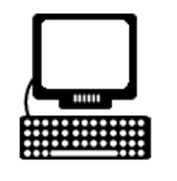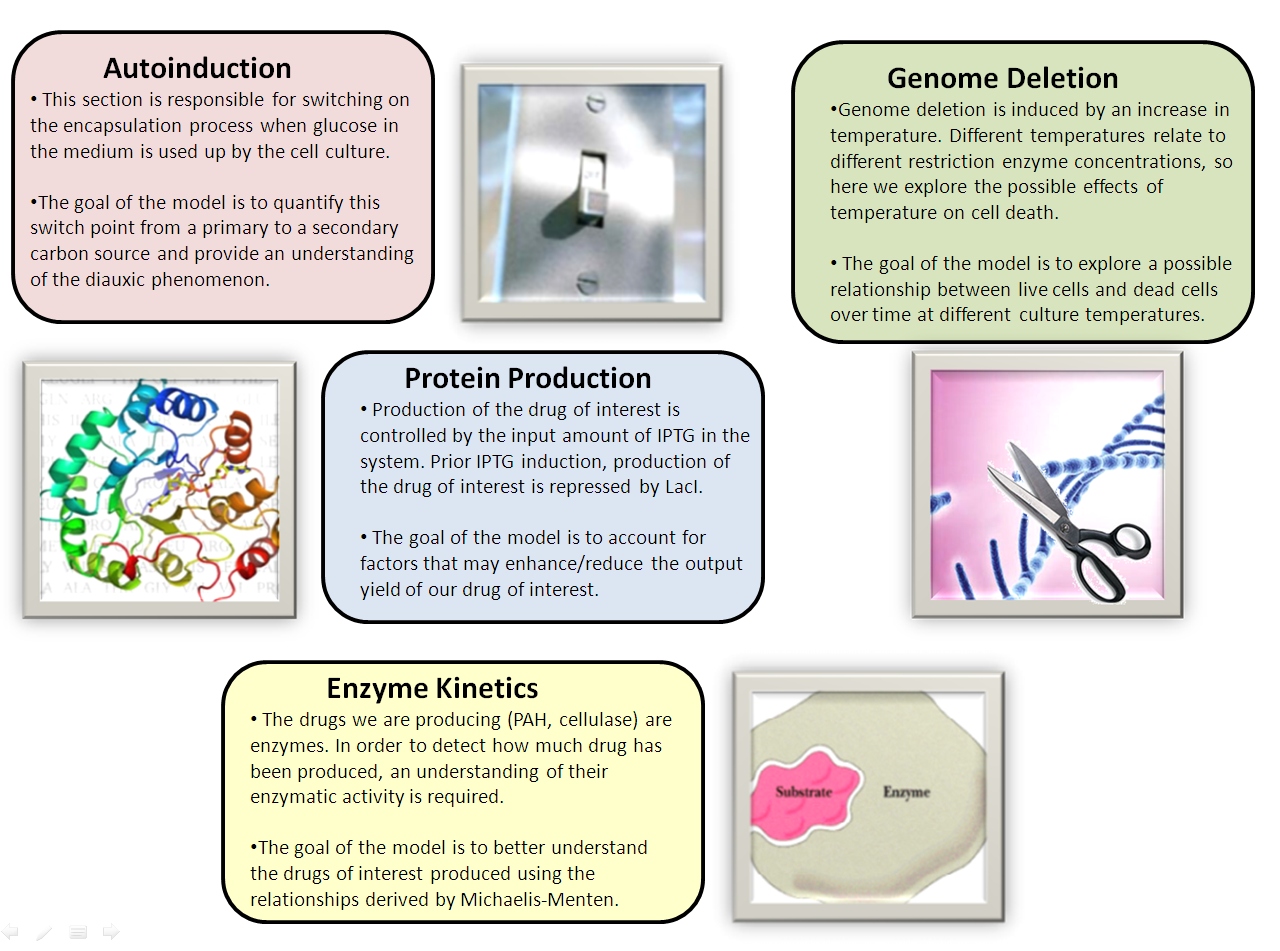Team:Imperial College London/Drylab
From 2009.igem.org
(→Our goals) |
(→80pxDry Lab Hub) |
||
| (21 intermediate revisions not shown) | |||
| Line 2: | Line 2: | ||
=[[Image:II09_DryLabThumb.png|80px]]<font size='5'><b>Dry Lab Hub</b></font>= | =[[Image:II09_DryLabThumb.png|80px]]<font size='5'><b>Dry Lab Hub</b></font>= | ||
Welcome to the Dry Lab! | Welcome to the Dry Lab! | ||
| + | <br> | ||
| + | The goal of the Dry Lab has been to support the Wet Lab by answering questions of interest. The primary function of the models is to instruct the data analysis once results are gathered from the lab. | ||
| + | Conclusions from the models aim to provide the team with a functional understanding of the system as well as design considerations that should be addressed in the genetic constructs. We have implemented several models, explaining the behaviour of different parts of the system. Below is a summary:<br> | ||
| + | <!-- | ||
| - | + | --[[User:Mabult|Mabult]] 17:05, 17 October 2009 (UTC) Do not forget that your models instruct the data analysis- it is actually their primary function--> | |
| - | + | ||
| - | + | [[Image:II09_drylabhub2.png|720px]] | |
| + | <!-- | ||
| + | *<b>Autoinduction:</b> | ||
| + | **This section is responsible for switching on the encapsulation process when glucose in the medium is used up by the cell culture. | ||
| + | ** The goal of the model is to quantify this switch point from a primary to a secondary carbon source and provide an understanding of the diauxie phenomenon. | ||
| + | *<b>Protein Production:</b> | ||
| + | ** Production of the drug of interest is controlled by the input amount of IPTG in the system. Prior IPTG induction, production of the drug of interest is repressed by LacI. | ||
| + | ** The goal of the model is to account for factors that may enhance/reduce the output yield of our drug of interest. | ||
| + | *<b>Drug Kinetics:</b> | ||
| + | ** The drugs we are producing (PAH, cellulase, opiorphin) are enzymes. In order to detect how much drug has been produced, an understanding of their enzymatic activity is required. | ||
| + | ** The goal of the model is to better understand the drugs of interest produced using the relationships derived by Michaelis-Menten. | ||
| + | *<b>Genome Deletion:</b> | ||
| + | ** Genome deletion is induced by an increase in temperature. Different temperatures relate to different restriction enzyme concentrations, so here we explore the possible effects of temperature on cell death. | ||
| + | ** The goal of the model is to explore a possible relationship between live cells and dead cells over time at different culture temperatures. | ||
| + | --> | ||
| - | |||
| - | |||
| - | |||
| - | |||
| - | + | Modelling in this project has been important in defining the "Engineering constraints" of the project, and in particular, we have focused on quantifiying the [https://2009.igem.org/Team:Imperial_College_London/Temporal_Control temporal control]. | |
| - | + | <!-- --[[User:Mabult|Mabult]] 17:10, 17 October 2009 (UTC) repeating yourself here !!!--> | |
| - | + | ||
| - | + | ||
| - | + | ||
| - | + | ||
| - | + | ||
| - | + | ||
| - | + | ||
| - | [[ | + | |
<!-- [[Image:m1.fgc.JPG | 400px.jpg]]--> | <!-- [[Image:m1.fgc.JPG | 400px.jpg]]--> | ||
| - | |||
| - | |||
| - | |||
| - | |||
| - | |||
| - | |||
| - | |||
| - | |||
| - | |||
| - | |||
| - | |||
| - | |||
| - | |||
| + | <!-- | ||
<html><center><a href="https://2009.igem.org/Team:Imperial_College_London/Genetic_Circuit"><img width=150px src="https://static.igem.org/mediawiki/2009/d/d9/II09_Temp_ArrowLeft.png"></a> | <html><center><a href="https://2009.igem.org/Team:Imperial_College_London/Genetic_Circuit"><img width=150px src="https://static.igem.org/mediawiki/2009/d/d9/II09_Temp_ArrowLeft.png"></a> | ||
<a href="https://2009.igem.org/Team:Imperial_College_London/Ethics"><img width=150px src="https://static.igem.org/mediawiki/2009/c/ce/II09_Temp_ArrowRight.png"></a> | <a href="https://2009.igem.org/Team:Imperial_College_London/Ethics"><img width=150px src="https://static.igem.org/mediawiki/2009/c/ce/II09_Temp_ArrowRight.png"></a> | ||
</html> | </html> | ||
| - | + | --> | |
Click on the links to find out more! | Click on the links to find out more! | ||
Latest revision as of 02:58, 22 October 2009

 Dry Lab Hub
Dry Lab Hub
Welcome to the Dry Lab!
The goal of the Dry Lab has been to support the Wet Lab by answering questions of interest. The primary function of the models is to instruct the data analysis once results are gathered from the lab.
Conclusions from the models aim to provide the team with a functional understanding of the system as well as design considerations that should be addressed in the genetic constructs. We have implemented several models, explaining the behaviour of different parts of the system. Below is a summary:
Modelling in this project has been important in defining the "Engineering constraints" of the project, and in particular, we have focused on quantifiying the temporal control.
Click on the links to find out more!




 "
"




